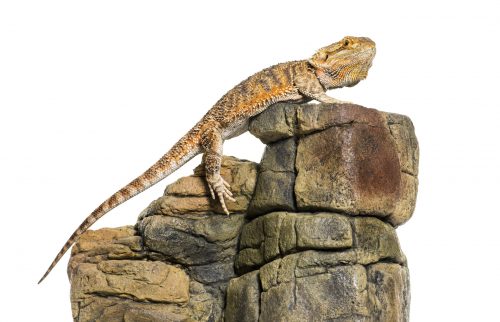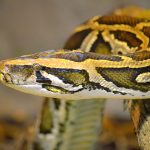Bearded dragons need UVB light to stay healthy and happy. Without it, they can suffer from serious ailments such as metabolic bone disease. This can cause permanent damage to their bones, so it’s important to provide them with UVB light regularly.
Generally speaking, a bearded dragon can go without UVB light for up to two weeks, but it is not recommended. After two weeks the effects of metabolic bone disease may start to set in and the dragon will become increasingly unhealthy.
It is best to ensure that your bearded dragon has access to UVB light for at least 8 hours per day in order for them to stay healthy and happy.
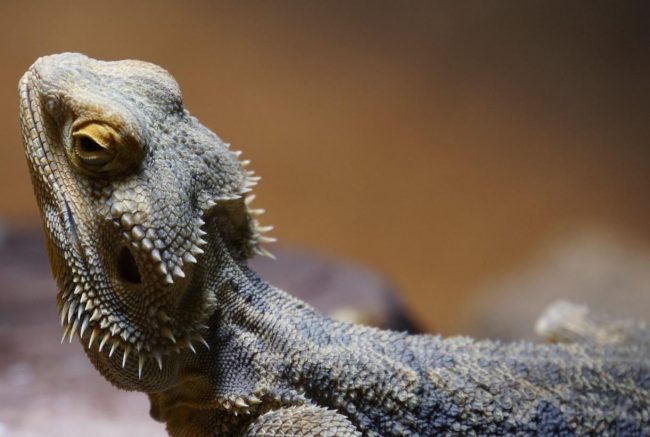
How Long Can Bearded Dragons Live Without UV Light?
Bearded dragons, like all other reptiles, need light to live. There are different types of lighting for bearded dragons. A bearded dragon can go for two days without UVB light. But if they don’t get enough vitamin D, their bodies cannot absorb calcium efficiently.
This leads to a whole array of ailments that weaken the bones and body of your pet, which, in the worst of situations, can result in the death of your beardies. Bearded dragons won’t survive long without UVB light. Actually, it would be fine for just a couple of hours without a lamp, which is not a long time.
How Much Heat Do Bearded Dragons Need Each Day?
Bearded dragons need a lot of heat to stay healthy and happy. The ideal temperature range for them is between 95 and 110 degrees Fahrenheit during the day, with a basking spot around 105-110 degrees Fahrenheit. At night, the temperature should be reduced to 70-75 degrees Fahrenheit.
You will need an appropriate heating source such as an overhead basking light or ceramic heat emitter to achieve this. It’s important to monitor the temperatures in your bearded dragon enclosure with a thermometer so that you can make sure the environment is suitable for them.
How Much UVB Light Do Bearded Dragons Need?
Bearded dragons need UVB, which they can get from light bulbs made for reptiles that give off between 8% and 10% UVB. The lizard has to have the light on during daylight for at least 8 to 14 hours of light. Enough UVB exposure is essential during the day. The heat lamps are only necessary if you don’t already have a system to use the UVB light source. A beardie can go for two days without UVB light.
Should I Turn My Bearded Dragon Light Off At Night?
Yes, A 8-12-hour exposure during the day is enough. At night, the UVB should be turned off. Along with taking calcium supplements, it is recommended that UVB lamps be switched on during the day and turned off at night. UVB lights should also be used. You can keep a bearded dragon warm with or without a heat lamp.
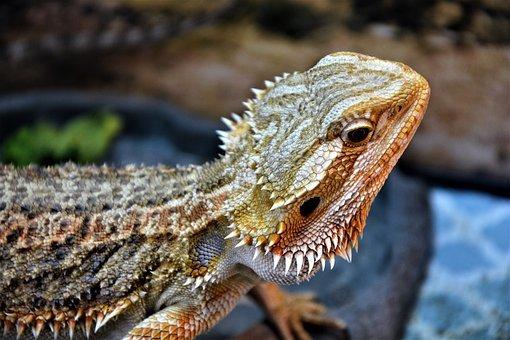
Where Should the UV light be?
When it comes to providing a healthy environment for your bearded dragon, an appropriate place for UV light is essential. The ideal location for the UV light is high up and slightly to one side of their enclosure, allowing them to bask in the light but still have some shade available. It’s important that the bulb is not too close, as this can damage their eyes and skin. As a beardie owner, you should understand the number of light hours your bearded dragon requires.
If possible, use a fluorescent UVB light, as this provides reptiles with better quality UV exposure than incandescent bulbs do. When setting up the lamp, make sure that it is secure and cannot be easily knocked down or damaged by curious claws or tails. With proper placement of their UV light, you can ensure that your reptile will always receive optimal levels of ultraviolet radiation!
Can A Bearded Dragon Have Too Much UVB?
Yes, a bearded dragon can have too much UVB. A beardie needs UVB to help synthesize Vitamin D3, which is important for the absorption of calcium. Make sure that your bearded dragon is not under high UVB rays which can cause sunburns and other health problems in your pet.
It is essential to provide the correct amount of UVB for your dragon by using a lamp or light source that supplies the right levels for your enclosure. You can buy either fluorescent or mercury vapor lamps, both of which will provide the necessary amount of UVB for your beardie.
Why is UV light important for bearded dragons?
Bearded dragons, like many other reptiles, require UVB light to be healthy and active. Without any UV light or heat bulb, adult or baby bearded dragons cannot properly synthesize vitamin D3 and process calcium in their bodies, leading to health issues and even death. Without vitamin D, there isn’t any calcium absorbed.
When the owner gets a bearded dragon, he needs to know how long to leave UV lighting on in their enclosure. Artificial light sources such as lamps that produce UVB light should be used in addition to natural sunlight if it isn’t available or is not enough for your bearded dragon’s needs.
With the right amount of UVB exposure from both artificial and natural light sources, you can ensure your pet bearded dragon stays happy and healthy for years to come.
What is Metabolic Bone Disease?
Metabolic bone disease is characterized by weak and brittle bones. This is a condition that can occur when bearded dragons don’t get enough UV light in their environment. While it’s not always preventable, providing your dragon with the proper enrichment and enclosure as well as enough UVB light is essential to keeping them healthy and preventing MBD.
Without any UVB light, their bodies cannot process vitamins correctly nor build strong bones so make sure that any enclosures you provide for these reptiles have enough UVB light to keep them healthy. If you see any signs of metabolic bone disease in your pet, be sure to take him to the vet right away so he can get treated before his condition worsens.
What Is The Correct Temperature Bearded Dragons Need In The Tank?
The enclosure for a bearded dragon, or ‘beardie’, should be kept to the correct temperature in order for the beardies to be comfortable. Adult bearded dragons need temperatures of between 80-90⁰F during the day and 70-75⁰F at night.
This will encourage them to bask and remain healthy. To regulate the temperature, a ceramic heat emitter should be used along with a thermometer and thermostat to ensure safety. Not only is it important that their habitat is kept at the correct temperature but also that they experience different light cycles; 12 hours of full-spectrum lighting during the day followed by 12 hours of darkness.
Bearded dragons need a varied environment to stay happy and healthy; luckily, it’s easy to replicate this type of environment in your dragon tank!
Do Bearded Dragons Need Both UVA and UVB?
Bearded dragons need both UVA and UVB light to stay healthy. They require this special light to help them properly absorb calcium, which is essential for their growth and development. Without it, they may develop the metabolic bone disease, which can be fatal.
To ensure your pet beardie gets the necessary light, you should provide them with a basking spot in their enclosure where they can get direct exposure to a full spectrum UV light. This should be placed near the warmest part of the enclosure so they can bask in it when needed. With proper lighting, your bearded dragon will remain healthy and happy!
How Far Should The UVB Bulb Be From My Bearded Dragon?
The proximity of the UVB bulb to your bearded dragon cage is crucial. Placing the lamp at the appropriate distance from the bearded dragon’s (also known as a beardie’s) reptile cage is vital to the dragon’s health and activity.
As a rule of thumb, the basking region of the bearded dragon habitat should be no more than 12-18 inches from the UVB lamp. Because of this, they will have plenty of chances to absorb UVB rays without risking any adverse effects on their health. For bearded dragons to survive in captivity, we must maintain a high level of heat AND UVB exposure.
How Many Watts Of UVB Does A Bearded Dragon Need?
Bearded dragons need daily exposure to UVB light for 8-12 hours. The UVB light is provided by a source of UVB. When the indoor temperature is approximately 70 degrees, a 100-watt mercury vapor lamp may provide adequate UVB and heat for a 55-75-gallon tank.
How Often Should I Change My Bearded Dragons UVB Bulb?
The frequency of changing your bearded dragon UVB bulb depends on a few factors. The most important is to monitor the creature’s health and behavior to determine when a change is necessary.
The less activity your bearded dragon has, the more often the bulb should be changed. If the light is not producing an effect on the dragon’s skin, it may be time to replace the UVB bulb. Bearded dragons need at least four hours of visible light each day in order to synthesize vitamin D3, so it is crucial to keep their environment brightly lit.
Are Coil UVB Bulbs Bad For Bearded Dragons?
Because they are frequently of an excessive intensity, coil UVB bulbs should be avoided when keeping bearded dragons. They have the potential to do permanent damage to your bearded dragon eyes, maybe possibly burning them! It is in your best interest to steer clear of them at all costs and go for a fluorescent light instead.
Why Isn’t My Bearded Dragon Laying Under the UVB Bulb?
Bearded dragons have the ability to sense whether their body temperature is rising, or falling, or when they are being subjected to an excessive amount of rays. They require some UVA and UVB radiation, but an excessive amount can be just as damaging as an insufficient amount. They will wander about in order to find a position that is comfortable for them, and sheltering in a cave may be their way of expressing that the light is too bright.
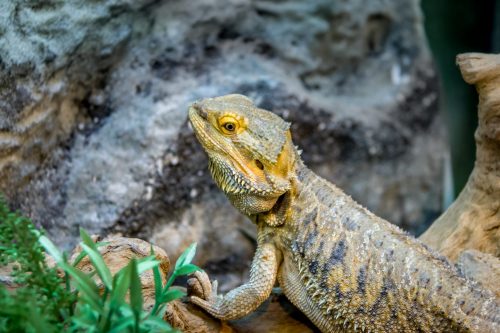
Can Bearded Dragons See UVB Rays?
Bearded dragons are cold-blooded reptiles. They bask in the sunlight to get heat. This is a natural source of UVB light for the bearded dragon.
Can Bearded Dragons Get UVB From The Sun?
Bearded dragons are cold-blooded reptiles. One of the most important things bearded dragons need is sunlight. As bearded dragons need UV light they bask in the sunlight. there are different UV light sources but this is a natural source of UVB light for the bearded dragon.
Bearded dragons can use the sunlight from windows and skylights for some of their UV requirements, but they need a full-spectrum light source to get the optimal amount of UV.
What to Do If Your Dragon Doesn’t Get Enough UV Lights
Bearded dragons can survive without UVB light for up to two days. But if they don’t get enough vitamin D, their bodies cannot absorb calcium efficiently. This leads to a wide array of ailments that weaken the bones and body of your pet, which can, in the worst of situations, result in death. Continue reading for further information on how to properly care for your bearded dragon.
What Happens to Bearded Dragons With No UV Light?
A wild reptile may spend many hours each day soaking up UV rays while sunbathing. The body needs this wavelength of light to produce the vitamin D3 required for healthy calcium absorption from the intestines. The skin produces vitamin D3 for the body. The metabolic bone disease (nutritional secondary hyperparathyroidism), a common ailment of pet reptiles, might be made more likely in your pet if you don’t supply UV radiation.
If not identified and addressed, this illness, which is a calcium and phosphorus imbalance in the body, can be fatal. These pricey but necessary bulbs can make the difference between such a healthy reptile and one that is ill or dying. In warm weather, regular exposure to DIRECT sunlight outside (without filtering through glass) is encouraged and advised whenever possible.
The UV bulb used should provide UV-B light (290-320 nanometers). Although vital for behavior, UV-A light (320–400nm) does not help the body make vitamin D3. Most reptile-related bulbs are available with UV-A and UV-B protection. The ReptisunTM, Iguana LightTM, Power SunTM (by Zoo Med), and Repti GloTM are a few examples of commercial UV-B-generating lights.
These lamps should be updated every 6 months or as recommended by the manufacturer because their UV output degrades with time. There must be no glass or plastic between the pet and the light for UV light to be effective since it needs to enter the animal unfiltered. For the animal to benefit, the light must be between 6 and 18 inches away from it.
How long can a bearded dragon go without a UV bulb?
Without UVB light, a bearded dragon can survive for two days. However, without vitamin D, they are unable to properly absorb calcium, which causes a variety of illnesses that weaken your pet’s bones and body and, in the worst circumstances, result in death.
A lack of calcium usually brings on the majority of a bearded dragon’s health issues. This is unusual in the natural world. The distinction: They receive far more sunlight in the wild.
For bearded dragons to survive in captivity, we must maintain a high level of heat AND UVB exposure. Bearded dragons naturally inhabit the Australian deserts.
Bearded dragons specifically require output from the light of 8% to 10% UVB. The bulb you use should bear this specification on it. Don’t presume that UVB alone will be sufficient. Make sure they are exposed for enough time to receive what they require by using the appropriate type of bulb.
Do Beardies need UV?
A UVB light or fluorescent tube should be present in the bearded dragon’s enclosure as a UV light source. Some of the UV that bearded dragons need can be met by sunshine coming in through windows and skylights, but for the best UV exposure, they need a full-spectrum light source. Your bearded dragon may develop a metabolic genetic condition or other health issues if it doesn’t get enough UV exposure from its surroundings.
Why is UV light important for bearded dragons?
Bearded dragons require access to natural sunshine in addition to warmth and white light to be healthy. This is because they require UVB light, a specific spectrum of ultraviolet (UV) light. Vitamin D synthesis in the bearded dragon depends on UVB exposure.
When the outside temperatures on a bright day are around 70°F, move your bearded dragon outside into a safe screen or wire cage with a lockable door because no artificial light is as effective as the sun in giving UVB. Give the cage some cover and a place to hide. Bearded dragons put in a sunny window are not exposed to UV light since UV rays cannot pass through glass.
Special lamps offer UVB light when a bearded dragon cannot access direct sunshine. You require a light that emits light between 290 and 320 nanometers. There are lamps made expressly for reptiles that emit UVB and white light, as well as lights that produce UVB exclusively. Every six months, these UVB light sources should be changed.
Can bearded dragons sleep without a heat lamp?
In the natural world, the temperature naturally declines throughout the night. In some places, this temperature drop can be extremely pronounced. Therefore, it is always a good idea to let the temperature in a bearded dragon’s habitat drop naturally at night since they don’t need as much heat then.
Is Mating Season Related to the Need for UVB Light in Bearded Dragons?
The mating season for bearded dragons explained reveals an interesting correlation with the need for UVB light. UVB rays play a crucial role in their reproduction, as exposure to this wavelength triggers hormonal changes that stimulate the production of eggs in female dragons. Additionally, UVB light helps males develop stronger bones and a healthier reproductive system, essential for successful mating. Understanding this connection emphasizes the importance of providing adequate UVB lighting for the overall well-being and breeding success of bearded dragons.
Final Thoughts on How Long Can a Bearded Dragon Go Without UVB
When it comes to the long-term health of your bearded dragon, it is essential to consider how long a bearded dragon can go without UVB. A bearded dragon needs UVB light for proper health and growth, and if they do not get enough of this light, they can become ill or even die. In order to ensure that your reptile gets the correct amount of UVB light, you should invest in a good quality bulb specifically designed for bearded dragons.
This bulb should be replaced every 6-12 months depending on the manufacturer’s instructions. It is also important to remember that while a bearded dragon can go without UVB for short periods of time, prolonged exposure to inadequate levels of UVB light can lead to serious health problems. Therefore, it is essential that you provide your reptile with the necessary UVB light so that it can live a happy and healthy life.

